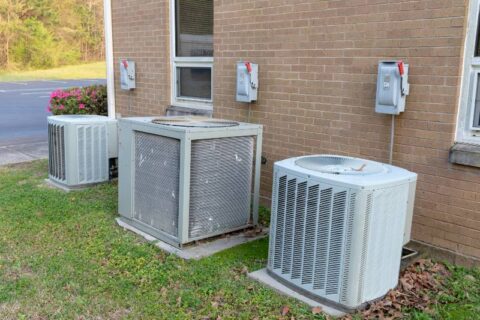The Dos and Don’ts of Clearing a Sink Clog
Slow drain? Before you call the professionals, try clearing the sink clog yourself. Just keep these dos and don’ts in mind to save time, minimize effort, and prevent damaging your pipes.
DON’T Use Harsh Chemicals
Liquid drain opener is the first thing many people think to use when they notice a clog. While this provides a temporary solution, your drain will likely clog again soon. Plus, corrosive drain cleaners can damage your pipes, especially with repeated use. So skip the harsh chemicals and pursue other ways to clear the clog.
DO Flush the Clogged Sink with Hot Water
This technique can help a slow drain flow smoothly again. However, it may not work if the sink is completely blocked.
First, pour a tablespoon of dish soap down the drain. Then, heat a large pot of water to near-boiling. Pour the hot water down the sink to dissolve grease and push the clog out of the pipe.
DO Check the Sink Stopper
If the hot water trick doesn’t work, the next step is to check the stopper commonly found in bathroom sinks. Disconnect the stopper from the lift rod and pull it out of the drain. The built-up hair and gunk may be causing the clog. Wipe off the stopper into the trash and check whether the drain flows smoothly before reinstalling it.
DO Try Plunging the Sink Clog
If a grimy stopper isn’t the problem, it’s time to break out the plunger. Create a tight seal around the drain with a standard cup plunger and firmly force it up and down to loosen the clog. For sanitation purposes, reserve a separate plunger for clearing toilet clogs.
DON’T Forget to Check the Trap
The P-trap prevents sewer gases from seeping out of the drain, but it’s a major source of sink clogs. Fortunately, the trap is easy to clean.
First, place a bucket under the curved section of pipe beneath the sink. Then, unscrew the connectors by hand or with a wrench and remove the trap. Dump the contents into the bucket and rinse the trap in a different sink.
DO Snake the Drain
With the trap removed, now is a great time to snake the drain. A plumber’s snake, or auger, is a long, coiled cable with a spiraled cutter at the end. Feed the cable into the pipe until you feel resistance, and then rotate the auger to break up the blockage. Wind the cable back up, reinstall the trap if needed, and run the water to test your work.
DON’T Hesitate to Call a Plumber
Whether you have a stubborn bathroom sink clog or a severe clog in the kitchen sink, Parley’s PPM Plumbing, Heating & Cooling can get things flowing again. We are a trusted Utah plumber with over 40 years of experience clearing clogged sinks. To request our help, please call 801-226-3033 if you live in Utah County, or reach us at 801-229-2665 if you’re a Salt Lake County resident. You can also request plumbing services online.


